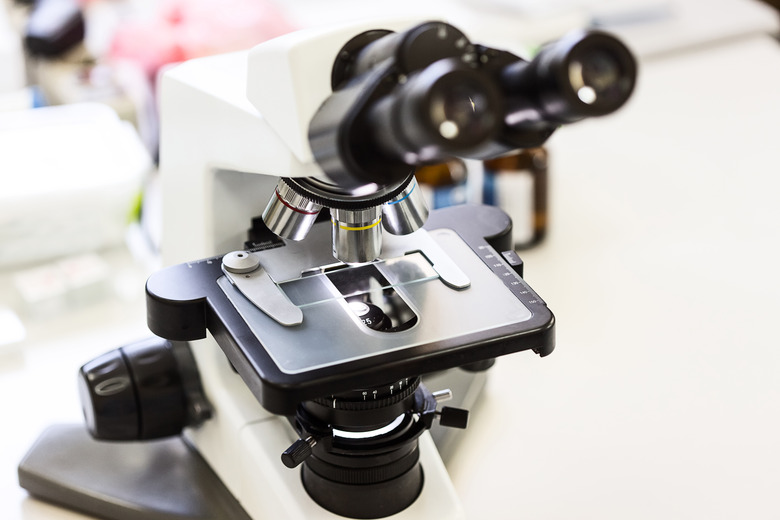How To Determine Magnification Of A Microscope
The magnification of a microscope describes the increase in apparent size of an object compared with its actual size. An object magnified 10 times (10X) appears 10 times larger than it really is. Total magnification is the product of the ocular lens magnification and the objective lens magnification. Magnification does not describe the quality of the image. Magnifying an object without good resolution is called empty magnification, as the image appears larger but no greater detail can be seen. Resolution typically limits the usefulness of light microscopes rather than magnification.
Step 1
Record the magnification of the ocular lens in the eyepiece. The magnification of the ocular lens is typically engraved on the side of the eyepiece.
Step 2
Record the magnification of the objective lens. The magnification is frequently engraved along with the numerical aperture (NA) on the side of the objective lens. Many compound light microscopes allow different objective lenses to be rotated into use on the nosepiece. Each objective lens has a different magnification.
Step 3
Multiply the magnification of the eyepiece by the magnification of the objective lens to produce total magnification. For example, a 10X ocular lens and a 40X objective lens will produce a total magnification of 400X (10 x 40 = 400). Changing the ocular lens or objective lens to lenses with a different magnification will change the total magnification of the microscope. Usually, it is the objective lens that is changed to increase or decrease magnification.
Things Needed
- Microscope Eyepiece
- Microscope Objective Lens
- Pencil
- Paper
Cite This Article
MLA
Chandler, David. "How To Determine Magnification Of A Microscope" sciencing.com, https://www.sciencing.com/determine-magnification-microscope-6293409/. 9 March 2018.
APA
Chandler, David. (2018, March 9). How To Determine Magnification Of A Microscope. sciencing.com. Retrieved from https://www.sciencing.com/determine-magnification-microscope-6293409/
Chicago
Chandler, David. How To Determine Magnification Of A Microscope last modified March 24, 2022. https://www.sciencing.com/determine-magnification-microscope-6293409/
